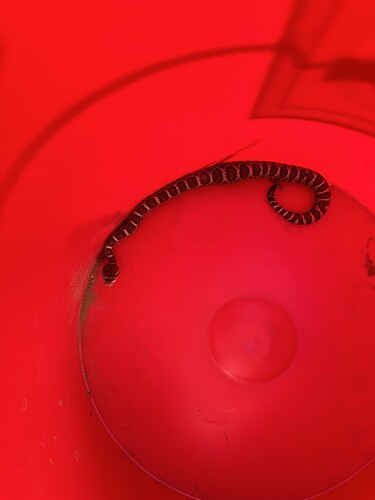Relocation season has begun.
Tranlocating snakes is something that seems wholesome on the surface but really isn’t ideal in most situations.
Research has shown that translocated snakes go through a period of extended hyperactivity and stress that will almost always lead to acute dehydration. Typically the next thing that’s going to happen is a reduction in immune system function. This becomes a very big deal in a wild animal given that they are all parasitized.
Once the immune system weakens, the parasite load tends to increase. Most animals aren’t going to survive that and the compounded effects of stress in general. “But some might make it” you say? Sure, except it’s impossible to know what the carrying capacity of an area is when you translocate a snake there, in general though, almost any undisturbed area is going to be at or near carrying capacity. So assuming our relocated animal survives, it’s going to be competing directly with othwr animals in the same niche. This is often going to lead to one or the other animal leaving the area. Which then restarts the cycle mentioned above.
So at the end of the day it comes down to the internal battle of is it better to give an animal a small chance to survive, even if it affects other animals already in that range, or let them get the shovel. This is not the simple choice it seems to be when you really stew on it for a while.
As bad as this may sound, I typically release the animal right down the road from where I had to collect it and cross my fingers it didn’t look unique enough that the homeowner notices if it shows up again.
My primary goal is to educate the customer and convince them to let the animal stay. I currently have a 0% success rate but still I have to try.
11 Likes
That’s very thought provoking.
5 Likes
I lose a lot of sleep over it 
6 Likes
It’s a lot to think about for sure… But either way, thank you for trying to do what’s best for the little guys! It definitely isn’t an easy job and you’re doing your best to try and find them a safe space.
7 Likes
Yeah, I read an article about the reality of snake relocation a while back. It made me sad. It’s definitely a conundrum. The snakes have a right to exist in a habitat that can support them…but I also understand why people don’t want snakes like rattlesnakes on their property, especially if they have kids and/or outdoor pets. My mom has had two dogs bitten by rattlesnakes in her backyard. Sadly the first dog didn’t make it. The second dog fortunately survived (after racking up nearly $10k in vet bills), but it was touch and go for a little while.
4 Likes
The only thing I really came up with when I started doing it several years ago was to just deposit them in a heavily disturbed habitat from past strip mining and basically just inundate the area with released snakes. There is ample food and water so it’s as much chance as I can give them without messing up a bunch of habitat.
This is root of the problem. You can’t teach small children or pets to reliably stay away from them in all situations. You can mitigate it but small children aren’t solid decision makers. Cats only hope is their reflexes and unfortunately the slow ones get weeded out. Aversion training works really well with dogs but it should be reinforced every year just to be safe. Most of the bites I hear about are dogs unfortunately.
5 Likes
My mom has done rattlesnake avoidance training with her dogs every year ever since the first dog got bitten and killed. The second dog who was bitten was a star pupil, and responded perfectly a couple of times when rattlesnakes came into the yard. But she still got bit. Nobody saw the bite actually happen, but we figure that the dog and the snake probably just sort of startled each other, and the snake reacted and defended itself before the dog really had a chance to react.
So I would say that avoidance training is absolutely worth doing and does reduce the chances of a dog taking a bite, but as with most things, it’s not 100%.
4 Likes
